Get Ready for the Cooler Weather!
6 fall home maintenance tips homeowners must know. Homeowners know they must perform seasonal home maintenance, especially during cooler weather. Doing these easy little things can prevent potential issues. What are the best ways to prepare your home for the fall?
Fall Home Maintenance Tip #1: Furnace Maintenance
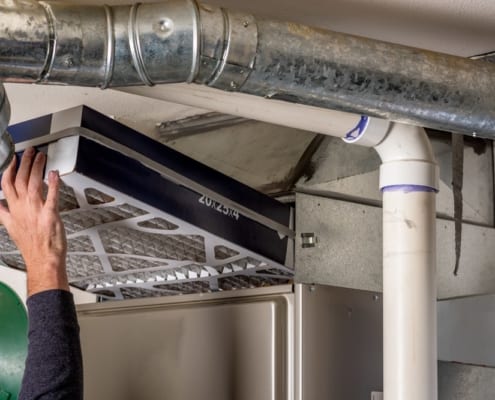
Your furnace should be serviced at least once a year. It’s best to do it in the early fall before turning it on for the winter, ensuring it’s operating correctly and efficiently and that dangerous issues, like carbon monoxide leaks due to a cracked heat exchanger, haven’t gone unnoticed.
There are a few different things you can do to prepare your furnace for the fall and winter, like:
- Change the air filter – Your air filter is easy to access and should be changed every 3-6 months. If you have pets or live in a dusty climate, you may want to replace it even more regularly than this.
- Clean the combustion chamber—Using a wire brush and a shop vacuum, you can remove carbon buildup from the combustion chamber. This prevents corrosion, allows for a longer furnace life, and improves energy efficiency.
- Inspect the flue—The flue is the pipe that sends exhaust outside your home. You can inspect it and check for leaks, sealing any small leaks with foil tape. Large leaks and corrosion may require you to replace the flue.
- Clean floor vents—You should vacuum your floor registers every year to ensure they are not blocked and that debris does not fall into the furnace.
These steps are easy enough for almost anyone; performing them alone can save you money.
Reduce your heating bill and even earn free energy (no joke!)
Fall Home Maintenance Tip #2: Weatherproof Your Windows and Doors

Weatherproofing can also help prevent damage to the subfloor below your exterior doors. If moisture and dampness get inside, they can eat away at the floor material and cause issues like mould and mildew.
To weatherproof your doors and windows, examine the weather stripping and gaps to determine if they may cause leaks or a draft, and then replace the weather stripping and other elements as necessary.
First, inspect the door or window. If you can see light coming through, chances are it’s drafty and needs to be weatherproofed. Then, you can use caulk to fill up minor gaps or backer rod to fill in more significant gaps. You also may want to replace damaged weather stripping on the interior or exterior of the door or window.
An adequately weatherproofed door won’t need to be redone for several years, but if you live in a harsh climate, you may need to replace the weatherproofing more often. It’s best to examine your doors every year. You may need to weatherproof your doors again if you notice gaps or drafts. If you don’t see any issues, you’re good to go for another year!
Fall Home Maintenance Tip #3: Clean Your Gutters
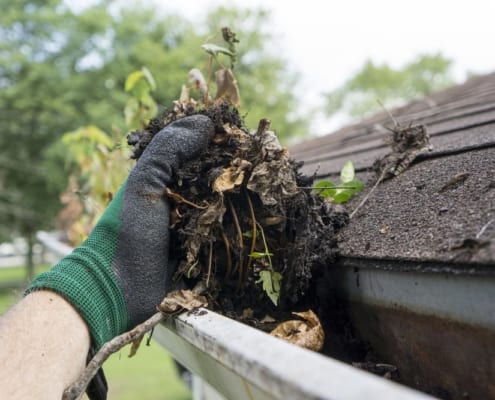
Your home needs regular maintenance to keep it safe and in good condition, and gutter cleaning is one of the most critical steps. Clogged gutters can damage your roof, cause leaks, cause ice damming in the winter, or even lead to foundation issues.
So grab a ladder, a plastic bag or a bucket, and get up to the roof! Stay safe on the ladder, and place it safely and securely. You may be able to walk on your roof if it’s not steeply pitched, but staying on the ladder is usually better. Grab all the debris from your gutters, dump it in your bucket or bag, and flush the gutter using a hose. Repeat until all your gutters are clean. It should only take an hour or so once you get used to it.
Fall Home Maintenance Tip #4: Flush Your Hot Water Heater
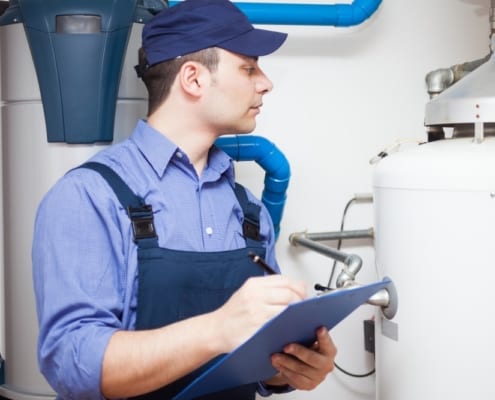
Flushing your water heater can help remove sediment from the tank and prolong its lifespan, and fall is the perfect time to do this. If you’re not handy and don’t like working with tools, you may want to hire a professional to do this. It’s not expensive, and the cost of a maintenance call is small compared to the benefits of a longer water heater lifespan.
Fall Home Maintenance Tip #5: Shut Off Your Exterior Faucets
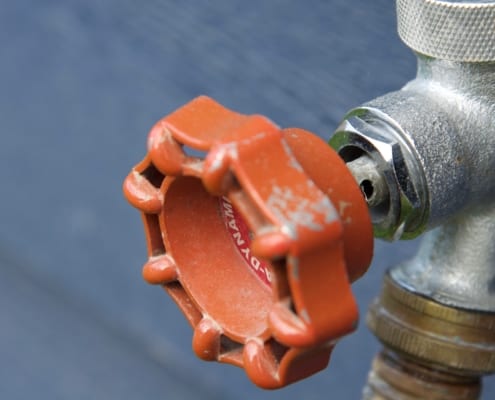
If you don’t shut off the water supply to your exterior faucets from inside your house, the pipes leading to them may crack and freeze, causing leaks that can cost a lot of money to replace.
You may not need to do this without a “frost-free” faucet. A good rule of thumb is that if a faucet knob is perpendicular to the house, it’s frost-free and uses what’s called a “frost-free sillcock” to prevent freezing – but make sure you double-check.
If your sillcock is not frost-free, there should be a shut-off valve for the exterior faucet somewhere on the pipe leading to it. Locate this and shut it off. Then, open the outside faucet and the adjacent bleeder valve to let any remaining water drain out.
Fall Home Maintenance Tip #4: Winterize your A/C System
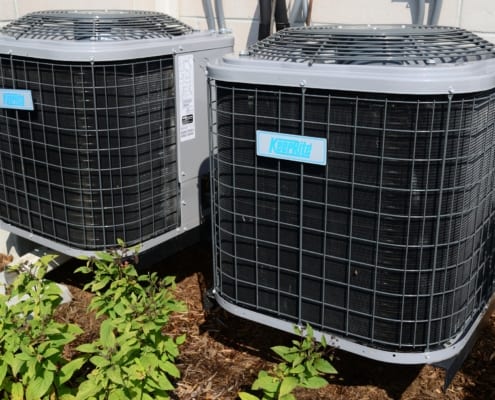
A/C systems can be damaged by ice, snow, debris, and other weather-related conditions in the fall and winter. That means you should winterize them before it gets too cold outside.
Winterizing your A/C is simple. First, remove grass, leaves, twigs, and other debris from the unit. Then, use a garden hose to rinse it and remove more debris, dirt, and dust.
Allow the unit to dry, then cut off the electrical power at the electrical circuit to keep it from switching on if a day is unexpectedly warm. After this, rubber pipe insulation should be installed around the pipes to protect against freezing.
Then, cover your unit with an A/C cover to keep ice, snow, and other debris from building up on it – and to keep hibernating critters away from the A/C.
Get Ready For The Cold Weather!
Regular home maintenance simplifies home ownership and avoids significant repairs and unexpected costs. Follow these fall home maintenance tips to keep your home safe this fall and winter.
This article originally appeared on Spectora

 ©️ Inspection Works
©️ Inspection Works